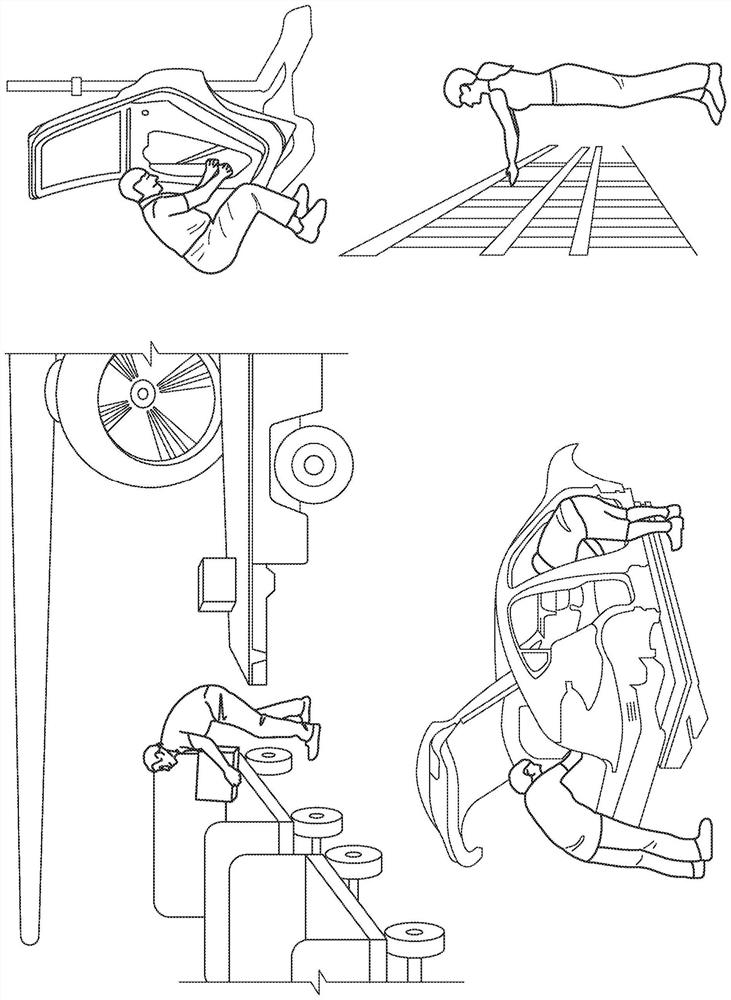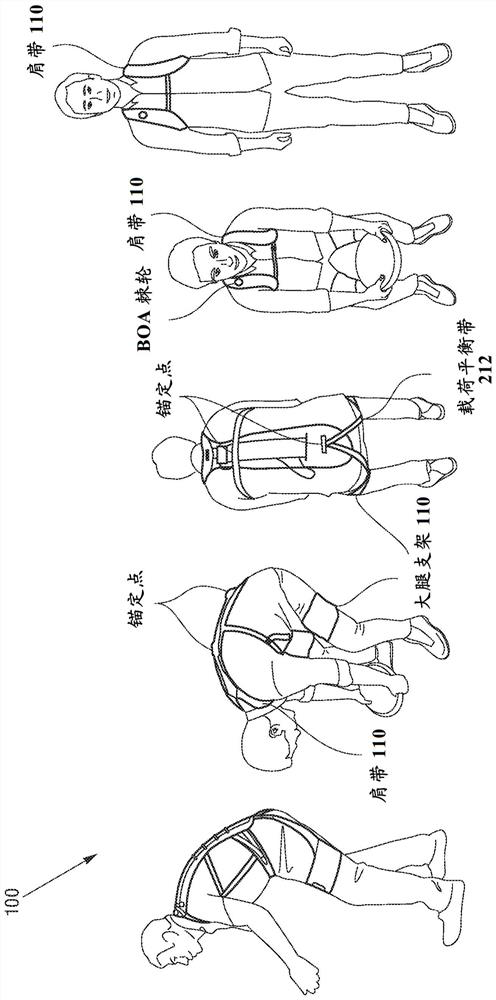Wearable devices for protecting against musculoskeletal injuries and enhancing performance
A wearable device, wearer technology, applied in applications, passive exercise equipment, non-surgical orthopaedic surgery, etc., can solve problems such as reduced work function and quality of life, disability, recurrent attacks, etc.
- Summary
- Abstract
- Description
- Claims
- Application Information
AI Technical Summary
Problems solved by technology
Method used
Image
Examples
Embodiment approach
[0220] a.F=α1x1+α2x2+...+αnxn where,
[0221] This approach can be followed to combine optimization of variables associated with providing physical assistance to the wearer (eg, peak muscle activity during lifting) and variables associated with the efficiency of the system (eg, battery life). Some example weights for two or more objects in an object function include:
[0222] Optimization of motion-related variables (lifting kinematics) and device performance-related variables (eg, device battery life).
[0223] Multiple variables such as peak muscle activity, posture during activity, battery life and comfort of the device are optimized by taking a weighted sum.
[0224] Multiple variables related to motion (eg, differential kinematics compared to baseline) as well as variables related to the interaction of wearable device 100 and the wearer (eg, user comfort) are optimized.
[0225] Optimizes peak muscle activity of targeted muscles without compromising muscle activity of...
example 1A
[0248] Representative Example 1A: Passive Devices for Back and Hip Support
[0249] As mentioned earlier, overexertion can often lead to fatigue and musculoskeletal damage. The back accounts for the majority of all overexertion injuries in the industry. Risk factors that can lead to back injuries include heavy lifting, repetitive lifting, prolonged periods of stationary posture, or lifting weights with suboptimal body positions.
[0250] In some circumstances when performing a task, it is necessary to work while bending over, but this posture creates strain on the lower back which over time can lead to chronic back pain or more serious back damage .
[0251] Some examples of activities that can benefit from back assist devices include:
[0252] a. Lifting objects, lifting heavy objects, or lifting objects in a position that is not ergonomically optimal are activities that may require back support.
[0253] b. Holding the object or transporting the object (especially if the o...
example 6
[0337] Example 6: Optimizing controls for shoulder assist to support overhead work
[0338] In an example, a healthy subject may need to perform overhead work to assemble different components in an overhead structure. This is a very common task eg in the automotive industry where factory workers will work underneath the car to perform assembly tasks, for example. As an example, in these cases, a worker may perform multiple repetitions of grabbing different components (such as screws, nuts, or other parts) from a table, The tool attaches these parts to the structure and / or grabs new parts from the table.
[0339] Performing overhead work strains the muscles in the neck and shoulders. The muscles in the shoulder tend to fatigue very quickly when performing overhead work, which is why it is considered one of the most common causes of injury due to body position.
[0340] Wearable assistive devices can be worn around the shoulders, such as Figure 27 As shown, in order to prov...
PUM
 Login to view more
Login to view more Abstract
Description
Claims
Application Information
 Login to view more
Login to view more - R&D Engineer
- R&D Manager
- IP Professional
- Industry Leading Data Capabilities
- Powerful AI technology
- Patent DNA Extraction
Browse by: Latest US Patents, China's latest patents, Technical Efficacy Thesaurus, Application Domain, Technology Topic.
© 2024 PatSnap. All rights reserved.Legal|Privacy policy|Modern Slavery Act Transparency Statement|Sitemap



